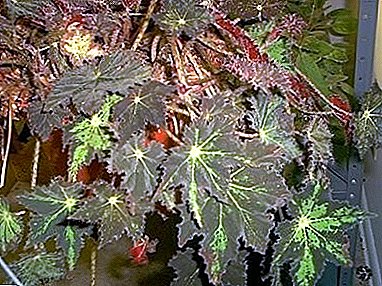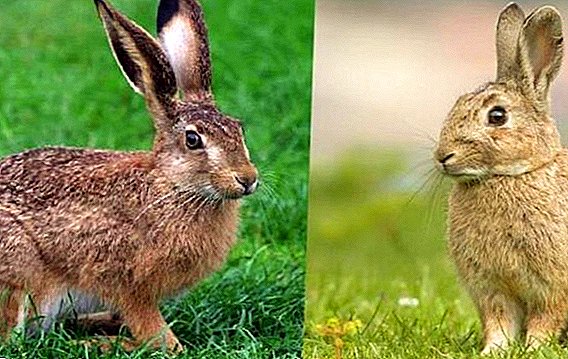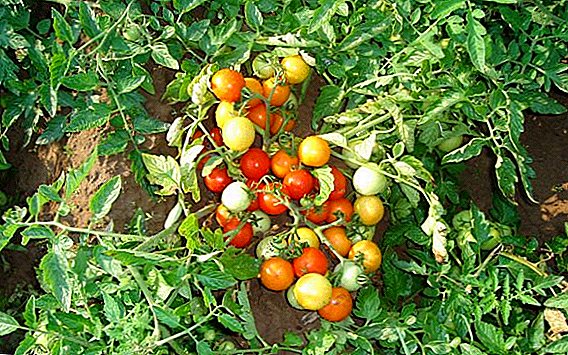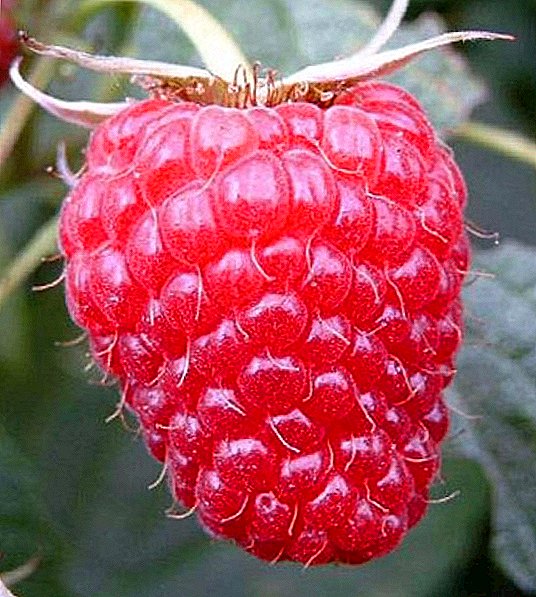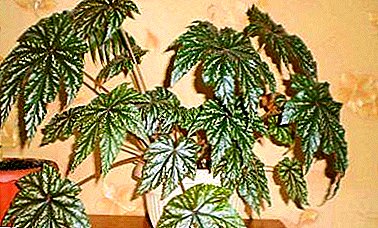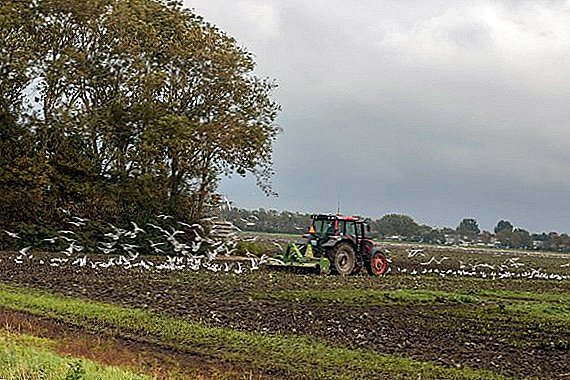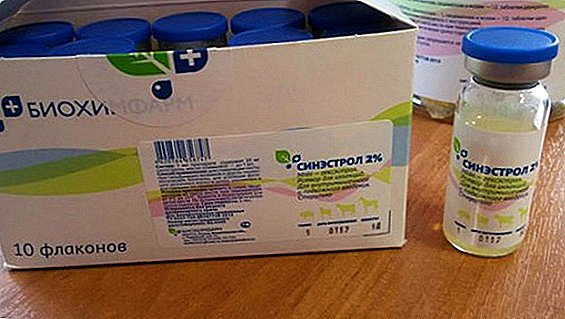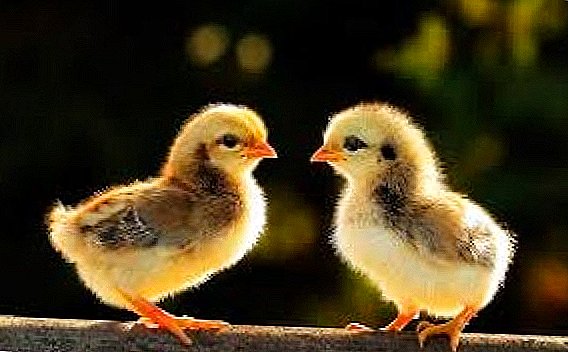
In our world, livestock or poultry farming is one of the most profitable branches of agriculture.
But in order to grow a healthy bird you need to monitor their conditions of detention.
Your profit directly depends on it.
It is important to note the fact that many diseases depend on proper feeding and microclimate.
Based on this knowledge, you can improve the conditions of housing and nutrition of chickens. In this article we will talk about the diseases that chickens are exposed to, about precautions, as well as the treatment of infected chickens.
Chick diseases can be divided into several categories:
- The first ones are infectious, which in turn can be infectious and invasive.
- The second is non-contagious.
In order to detect the disease in time, it is necessary from time to time. inspect the chickens. During the inspection it is necessary to pay attention to: the condition of the feathers, the oral cavity and the mucous membrane of the eyes.
Non Chick Disease
The main causes of such diseases are the conditions of the birds and their nutrition.
Hypothermia or hypothermia young

In the first month of chickens life, the thermoregulation system is still not working well for them, so they need to be warmed. If this is not done, it becomes cold, as a result of which the chickens gather in piles and squeak, climb on each other to warm up, and as a result can die.
Symptoms: Chickens do not move much, respiratory diseases begin to attack them, and intestinal upset is sometimes manifested. When the chickens are more than a month old, their growth and development stops, their plumage will dull.
Treatment: for a start, it is necessary to move the youngsters to a warm room, then pour them a warm drink, after which the bird begins to warm up and heals. Prevention: you need to monitor the temperature of the air in the room, to avoid drafts.
Hyperthermia or overheating
Increased air temperature is also very bad for the development of chicks. Overheating may occur on the birds ’walk when exposed to the sun. Especially overheating is possible in the absence of reservoirs in pens.
Symptoms: blueing and shrinking scallop, lack of appetite, indigestion.
Treatment: for treatment, remove the source of overheating.
Prevention: keep young stock in the shade, and chickens should have constant access to water.
Atrophy of the muscular stomach

The cause of this disease is feeding the chicks with the same mealy feeds, and also if there is no gravel in the feeder. Most often, the disease manifests itself in chickens aged from a month to three.
Symptoms: increased attraction to water, eating food all the time, in the litter you can see undigested food, weight loss.
Treatment: In the treatment, crushed grain is introduced into the diet, as well as gravel is added.
Prevention: you need to feed the chicks only high-quality food, while giving them finely chopped grass several times a day.
Indigestion or dyspepsia in young
The disease manifests itself at the age of chickens for about a month, with poor feeding, watering them with poor water, while feeding them rough and hard-to-digest food, with a lack of vitamins in the diet.
Symptoms: Inflamed gastric mucosa, nausea or vomiting. Indigestion is divided into simple and toxic. With simple indigestion, weakness, increased ruffling, immobility, eyes closed, diarrhea with mucus and undigested food, dirty fluff near the cloaca, slimming chickens, convulsions are observed.
With toxic indigestion, the same symptoms appear, but accompanied by high fever and all this leads to the death of the chickens.
Treatment: introduction to the diet of light feed chickens, give them yogurt, cottage cheese, milk whey, greens: onions, garlic or wild garlic. Instead of water, give aqueous solutions with soda or potassium permanganate. In severe stages, antibiotics and sulfa drugs are given.
Prevention: you need to feed the chickens only good feed, light and full. The house should always be clean. Rinse feeders and drinkers, disinfect them every week or rinse with boiling water. Monitor the temperature of the air in the building, avoid hypothermia and hyperthermia.
Avitaminosis

Most often there is a lack of vitamins A, B and D, and sometimes it is also a vitamin deficiency.
Symptoms: with a lack of vitamin A, weakness in the legs, conjunctivitis. With a lack of vitamin A, the wings soften, developmental delay, convulsions, head thrown back.
With a lack of vitamin D (manifested at the age of two weeks or more) loss of appetite occurs, weakness, small growth, bones soften, and rickets sometimes develop. With a lack of vitamin K (appears on hot days and with respiratory diseases), lack of appetite, dry skin, comb, eyelids, hemorrhage may appear.
Treatment: As a treatment, chickens should be given preparations containing such vitamins. And also monitor their proper nutrition.
Prevention: for prophylaxis it is necessary to add vitamins A to the chickens feed (shabby carrot and greens), vitamins B (greens, germinated grain, fresh yeast, dairy whey, herbal, meat and bone meal and fish meal), vitamins D (fish oil, herbal flour, nettle, mineral elements), vitamins K (nettle, clover, alfalfa and carrots).
Peck or cannibalism
The reasons for this behavior are irrational feeding, a small room, when not letting the birds out on the street, bright and long lighting.
Symptoms: Chicks with this disease begin to pluck out each other feathers and body parts.
Treatment: Damaged birds are transplanted to another place, wounds resulting from pecking are disinfected with iodine, tar, potassium permanganate or sintomycin emulsion.
Bone meal, greens, yeast are added to the diet, they give dissolved salt with water, citric acid with water. Pharmaceutical preparations can be applied aminazin.
Prevention: for this you need to monitor the correct content of the birds. Also, when this disease appears, eliminate the cause.
Zinc phosphide poisoning

Zinc phosphide is a medicine used to bait small rodents. Chicks may accidentally eat these kernels.
Symptoms: depression, irrational movements, poor breathing, saliva outflow, diarrhea with blood, paralysis and convulsions, and eventually death.
Treatment: Lugol solution and potassium permanganate solution are used.
Prevention: do not put poison in those places where there may be chickens and eat it.
Poisoning by nitrites and nitrates
Such poisoning occurs as a result of eating pesticides, which are used in agriculture, as well as when eating feed containing high doses of these substances.
Symptoms: severe agitation, conjunctivitis, redness of the mouth and earrings. Dyspnea, saliva outflow and convulsions may occur. But in the end the chicken can die.
Treatment: lactic acid is considered a good remedy for such poisoning.
Prevention: keep these substances out of the reach of chickens. And also sometimes to investigate food and water for the content of such substances.
Salt poisoning

The causes of this disease may be due to an excess of salt in the feed, when feeding fish, cucumbers or water.
Symptoms: they can appear within two hours after poisoning, they will be noticeable in loss of appetite, great thirst, depression, too frequent breathing. After that, diarrhea, paresis, paralysis of the extremities manifest, and as a result, the death of chickens can occur.
Treatment: With this poisoning, a 10% glucose solution with a prick or a heavy drink helps a lot.
Prevention: you need to keep track of the feed you give to the chickens so that there is not a large amount of salt in it.
What infectious diseases can occur in young animals?
Infectious diseases can be of two types: bacterial (salmonellosis, colibacteriosis, tuberculosis, pasteurellosis) and viral (pseudo lens, laryngotracheitis, flu).
When such diseases can be noted a sharp increase in body temperature, the manifestation of drowsiness and poor condition, there are closed eyes and omission of the wings, red mucous membrane, accumulation of mucus in the oral and nasal cavities, poor breathing accompanied by fluff and whistle, diarrhea, poor condition of bird plumage.
Pulloz - typhoid

This disease can overtake chickens as young as two weeks old.
Symptoms: sick chickens can notice a lack of craving for food and water, a sluggish gait, gathering in piles in warm places, closed eyes, lowered wings.
Little move and heard a squeak. Litter first as a slurry, and then diarrhea appears with a yellow shade of foam. Down near the cloaca is polluted. The chickens begin to breathe very tightly with a rattle and a squeak.
With long-term weakness, chickens stop walking altogether, tip over and die. The mortality rate for this disease reaches 60 percent.
Prevention and treatment: used drugs: penicillin, biomitsin, furazolidone, sintomitsin, a weak solution of potassium permanganate. These drugs give and as a prevention from the first days of life.
Paratyphoid or salmonellosis
According to the disease most sick chickens that are related to water. This disease is very common, and in many cases accompanied by death, about 70 percent of chicks die.
Reasons such a disease can become the consumption of contaminated feed and water. Carriers of the disease are pigeons and gulls.
Symptoms: this disease is almost impossible to detect in the initial stages, since no symptoms appear, and immediately the young chicks die. Basically, the disease lasts up to four days, with this may appear loose stools, the nervous state of the bird, and abundant drinking.
Treatment and Prevention: use a variety of drugs that are effective in the disease pullorosis - typhoid.
Colibacteriosis

Most often, this disease is sick chicks under the age of three months.
The disease develops very acutely and chronically. This disease may be secondary.
Symptoms: during the acute development of the disease, there are high temperatures, depression, loss of appetite, thirst, there is bad breathing accompanied by wheezing, which can be noticed while moving the chicks. You can also notice the defeat of the respiratory system, signs of enteritis and inflammation of the belly.
Treatment and Prevention: use of the drug furatsilina. Enter quarantine on the farm. Need to well disinfect the room.
Pasteurellosis
These diseases can affect chickens between the ages of two and three months. Both poultry and wild can be sick. The disease most often occurs in the cold season.
Symptoms: during the acute course of the disease, lethargy, detached holding from others, all the time the chicken is sitting, mucus in the form of foam is released from the nose and mouth, wheezing occurs. The temperature rises to 43 degrees Celsius, dull and tousled feathers.
The stool is yellow-green in color sometimes with blood. Difficult breathing, no appetite, abundant drinking. The result is a strong weakness and the chicken perishes. In the case of hyperacute disease, the chicks immediately die. Mortality of chickens is about 80 percent.
Treatment: it is necessary to better maintain and feed the bird, as well as to apply drugs: hyperimmune polyvalent serum and antibiotics. And from the new drugs you can use trisulfone and cobactan suspension.
Prevention: it is necessary to comply with all sanitary requirements for keeping poultry, immediately remove infected birds from the flock, vaccinate chicks. In the diet add vitamins and minerals. In the event of a disease enter quarantine.
Newcastle or pseudo-disease

Not only chickens, but also adult birds are subject to this disease.
Symptoms: In some cases, the disease passes very quickly and is accompanied by the death of a bird within three hours.
Chronic disease progression is characterized by paresis and paralysis, sudden weight loss, high temperature, drowsiness, mucus from the mouth and nose, snoring breathing, yellow or gray-green diarrhea, this form lasts about three weeks.
Treatment: this disease is not treatable, so the infected bird is immediately destroyed. It is necessary to destroy a bird without blood, since the disease can spread with blood. This disease is dangerous for humans.
Prevention: when a sick bird appears, it must be immediately isolated from the rest, after which a strict quarantine should be introduced. Chicks need to be vaccinated. The room must be cleaned and disinfected.
It is also interesting to read about diseases of adult chickens.
Smallpox
Chickens are very susceptible to this disease.
Symptoms: already on the fifth day of the disease on the skin near the beak, the eyelid and on the whole body, you can notice yellowish spots, which eventually develop into wart growths.
The condition of the bird is as follows: bad mood, ruffled feathers, no appetite. In case of diphtheria and mixed progression of the disease, a white rash can be noticed in the mouth, which eventually interferes with breathing, therefore the beak is open all the time and rattling sounds are heard. Exactly such a diagnosis can be made by doctors.
Treatment: a disease that is not treatable. If a sick bird appears, it is immediately removed from the rest, and informed to a specialist in order for it to take any measures.
Prevention: it is necessary to vaccinate young. Disinfect the house. Birds need to add dry ashes, in which they bathe and at the same time get rid of parasites.
Parasitic diseases catching up chickens
Coccidiosis

This disease can occur from the very first days of the life of the young, but it also catches up at the age of a month.
Symptoms: depression, no craving for food, loose stools, dirty feathers around the cloaca, diarrhea may be with blood, paresis of the limbs may appear at the end of the disease.
Treatment and Prevention: apply furasalidone, a solution of norsulfazol with the addition of water.
Heterosis
The causative agents of this disease are worms, up to fifteen millimeters long. Fifty to thousands of them can be found in a diseased bird.
Symptoms: with such a disease suffers stomach, lack of appetite, loose stools.
Treatment: use the salt of piperazine.
Prevention: With this disease, fetothiazine is used for about a month. You can give the birds a solution of potassium permanganate within a month.
Diseases of the organs of egg formation
Inflammation of the ovary
Such a process may occur with an injury to the ovary, which, subsequently, can lead to the manifestation of blood clots in the follicles. In this case, the yolk does not enter the oviduct, but into the belly, which causes an inflammatory process called yolk peretonitis.
The inflammatory process can occur as a result of very frequent feeling of the birds or due to some kind of injury.
The result of inflammation can be the formation of two yolks in the egg, small eggs or eggs with a very thin shell, can also be eggs with only one protein.
Frostbite
It occurs most often in places that are not covered with feathers; these are comb, earrings and toes. The scallop turns black and dies as a result of frostbite. Fingers can fall too. When frostbite spots appear, they should be rubbed with snow, treated with iodine and spread with ointment against frostbite.
Before the onset of frosts, it is good to lubricate the uncovered places with edible grease or petroleum jelly.
It is necessary to keep birds in warm rooms, and to warm the house before winter.


